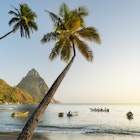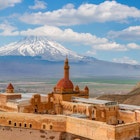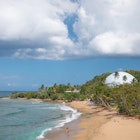
Dec 2, 2025 • 6 min read
The Pyramids of Giza is a vast complex of architectural wonders shrouded in mystery. Here's how to get the most out of your visit.

Dec 2, 2025 • 6 min read
The Pyramids of Giza is a vast complex of architectural wonders shrouded in mystery. Here's how to get the most out of your visit.

Dec 2, 2025 • 6 min read
You'll find plenty of ways to keep your kids entertained in Cuba, from frolicking in the Caribbean sea to searching for wildlife and more.

Dec 2, 2025 • 8 min read
Visit Furano in Hokkaidō for stunning flower-filled landscapes, top-quality ski slopes and tasty local produce.

Dec 2, 2025 • 8 min read
Sydney's public transport network is reliable, reasonably priced and way more convenient than driving – plus its largely air-conditioned.

Dec 2, 2025 • 8 min read
From exciting wildlife encounters to active adventures, Melbourne offers an array of options for kids of all ages.

Dec 2, 2025 • 7 min read
Make the most of good roads and public transit connections to explore more of New South Wales on these top day trips from Sydney.

Dec 2, 2025 • 10 min read
Victoria's capital has a wealth of free attractions to keep you entertained, from marvelous museums to beautiful gardens and vintage amusement parks.

Dec 2, 2025 • 6 min read
If you need a place to recover from the holiday hustle and set the perfect tone to begin the New Year, these destinations each make an ideal February escape.

Dec 1, 2025 • 6 min read
This five-day itinerary that balances outdoor adventures with plenty of opportunities to relax in this dreamy Caribbean island.

Dec 1, 2025 • 8 min read
Is this 105-mile, multiday trek through the mountains of France, Italy and Switzerland on your bucket list? It should be.

Dec 1, 2025 • 13 min read
Southeast Asia was the sun-soaked end destination of the hippie trail. Discover more on this 4-week itinerary visiting cities, ruins, islands and beaches.

Dec 1, 2025 • 7 min read
Türkiye's diversity of landscapes and heritage surprises some travelers. After seeing İstanbul and the country's top beaches, stop at these amazing places.

Dec 1, 2025 • 5 min read
Find the best time to visit Nashville with our guide to events, budget and weather through the seasons.

Dec 1, 2025 • 4 min read
Glimpse into a rich tapestry of rituals, quirks and beliefs at these rare festivals in the Indian Himalaya.

Dec 1, 2025 • 12 min read
Find the very best swells in Sri Lanka with this surfing guide.

Dec 1, 2025 • 9 min read
Türkiye presents such a deep menu of stunning landscapes and beaches, modern cities and ancient ruins that any list of what to see is long and varied.

Dec 1, 2025 • 8 min read
You can sip a few samples at wineries, soak in refreshing mineral springs and walk along beautiful trails – all without needing a car.

Dec 1, 2025 • 9 min read
Melbourne is Australia's second-biggest city, but the center is easy to navigate and transport is very affordable. Here's what you need to know.

Dec 1, 2025 • 6 min read
Melbourne brings a range of sports and indoor cultural attractions all year. Here are the best times to visit to match your favorite activities.

Dec 1, 2025 • 9 min read
From high culture to local life, here are the best things to do in Melbourne, a big Aussie city with a European vibe.

Nov 30, 2025 • 7 min read
All you need to know about a trip to Rincón, Puerto Rico's remote western surf town.

Nov 30, 2025 • 8 min read
Ireland's capital could keep visitors interested for ages, serving up incredible food and drink in authentic pubs alongside ancient books and monuments.